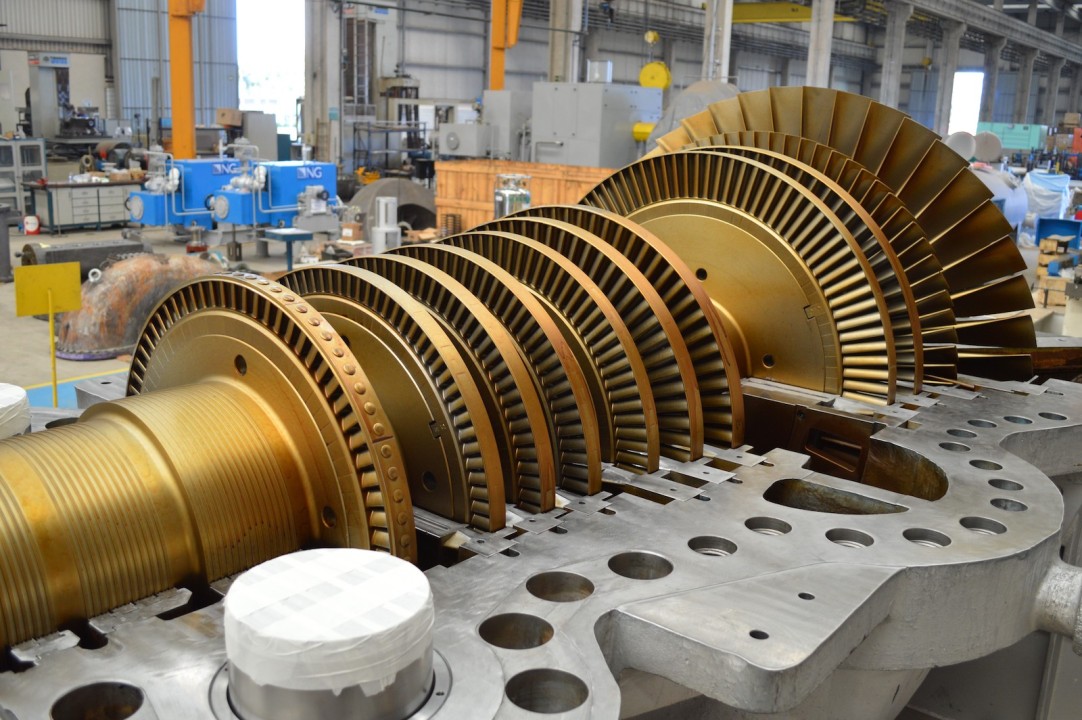
Steam Turbine Market Size, Share, Growth, Trends Analysis by 2030
According to a leading research firm Market Research Future (MRFR), the global steam turbine market is expected to garner a valuation of approximately USD 20,747.68 MN by the end of 2030. MRFR, in its recent market analysis, also asserts that the market would register 2.87% CAGR during the assessment period (2023-2030). The notable increase in the renewable energy sectors worldwide, alongside advances in manufacturing techniques and related technologies, define the market landscape.
The global steam turbine market is garnering significant traction. The market growth attributes to the shifting focus from traditional to cleaner and renewable energy sources. Besides, increasing industrial uses such as generators at power plants and large ships that run on steam turbines drive the growth of the market. Rising uses of smaller steam turbines to drive pumps and fans at petrochemical plants escalate the market growth.
Rising demand for power and increasing greenhouse gas emissions increase the market size, promoting renewable energy sources such as gas energy. Additionally, rising product development is a prime driver of market demand. Favorable government policies and receding fossil fuel reserves influence the growth of the market. Moreover, the advantages of condensing steam turbine accelerate market growth.
Furthermore, growing ecological concerns define the rising demand for clean, renewable, and sustainable power generation. Conversely, high initial capital investment requirements are the major factors projected to impede market growth. Nevertheless, augmented demand for sustainable power generation worldwide would support market growth during the assessment period.
Global Steam Turbine Market – Segments
The report is segmented into five dynamics;
By Plant Fuel : Coal, Gas, Nuclear, and others.
By Capacity : Up to 120 MW, 121-750 MW, and Above 750 MW.
By Exhaust Type : Condensing Steam Turbines and Non-Condensing Steam.
By End User Industry: Power & Utility, Industrial, and others.
By Regions : Europe, Asia Pacific, Americas, and the Rest-of-the-World.
Global Steam Turbine Market – Regional Analysis
The Asia Pacific region dominates the global steam turbine market. The growth is attributed to the augmenting demand for electricity in the region. Besides, the rising steam power generation due to the rising electric utility rates and power companies drive the regional market growth. The commencement of numerous gas power projects and a shift from the O&G sector boost the regional market growth.
Moreover, substantial investments in energy plants and equipment, augmenting adoption of pressure steam turbines, and growing power generation in the region substantiate the market growth. India and China hold substantial shares in the regional market, heading with momentous capacity additions. The APAC steam turbine market is projected to retain its dominance throughout the estimated period.
Europe stands second in the global steam turbine market. The growth is driven by the high investments in gas energy sectors in the region. Additionally, favorable government regulations to promote renewable energy accelerate the revenue growth in the market. Also, the largest energy consumption has increased steam farm capacities.
Furthermore, the growing innovation and technological advances in pressure steam propel the growth of the regional market. Spain, the U.K., France, and Ireland hold considerable shares in the regional market due to the spurting growth in these countries' renewable energy sectors. The European steam turbine market is expected to witness the highest growth over the forecast period.
North America is a sizable market for steam turbines. Factors such as the saturation of natural gas locations and competition from solar energy foster the regional market's growth. The vast consumption of energy and rising awareness of renewable sources in the region substantiate market growth. The North American steam turbine market is expected to grow at a moderate rate during the assessment period.
Steam Turbine Market – Competitive Landscape
Highly competitive, the steam turbine market appears fragmented, with several notable players forming a competitive landscape. To gain a larger competitive share, industry players adopt strategic approaches such as mergers & acquisitions, collaborations, expansions, and product/technology launches.
Technology providers strive to develop new manufacturing techniques and larger & efficient turbine blades. They use time-tested methods and best practices to bring together various point systems and technologies into a security-rich, integrated environment to enhances resource planning and asset management.
Major Players:
Players leading the steam turbine market size are Siemens AG (Germany), Alstom SA (France), General Electric (US), Toshiba Corporation (Japan), Mitsubishi Hitachi Power Systems (Japan), ABB (Switzerland), Fuji Electric Co., Ltd.(Japan), Elliott Group (US), and Man Diesel & Turbo SE (Germany ), among others.
Industry/ Innovation/ Related News:
October 23, 2020 ---- GE Gas Power Services (the US), a leading global energy technology company, announced signing a new contract with Vietnam-based state-owned power utility and Power Generation Joint Stock Corporation 3 (EVN GENCO 3) to continue to supply parts and services for its Phu My 2.1 and 4 Power Plants.
The deal would improve efficiency, availability, reliability, and reduce the two facilities' operational costs. GE Steam Power MoU to support the training of EVN GENCO 3 personnel and co-operation for services related to steam turbine and generator equipment maintenance.
#SteamTurbine #EnergyGeneration #PowerPlant #RenewableEnergy #IndustrialSteam #TurbineTechnology #Efficiency #CleanEnergy #SteamPower #TurbinePerformance #SustainablePower #GreenEnergy #SteamTurbineMarket #EnergyEfficiency #ElectricityGeneration #SteamTurbineIndustry #SteamDriven #PowerGeneration #SteamTurbineDesign #SteamTurbineMaintenance